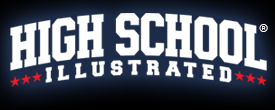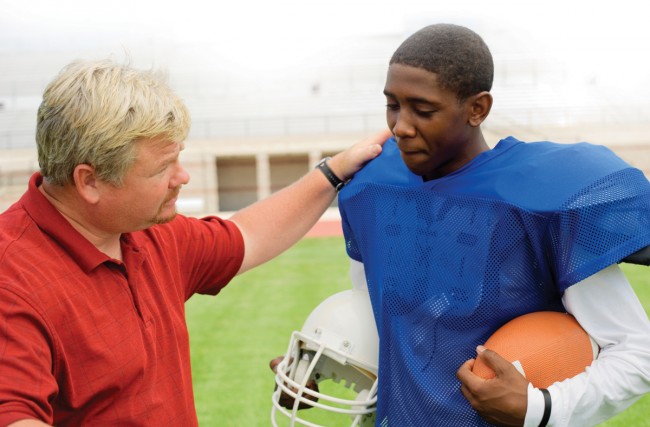Each year, high school student-athletes have dreams of being recruited and offered scholarships. For many families, the entire recruiting process is completely overwhelming, misleading and frustrating, because families may not understand what is involved in college recruiting. College recruiting is a game, like any other sport athletes have ever played. An athlete must practice in order to play, and he or she must compete in order to win. This game has already started, and your performance both on and off the playing field will determine the final outcome at the end of the game.
What Opportunities Are There in the NCAA?
There are more than 1,300 men’s and women’s NCAA college sports programs. Although Division I is the most recognized level, there are many opportunities to play Division II Division III or NAIA. Only about 20 percent of all colleges are Division I. If you are only looking at Division I colleges, you are eliminating up to 80 percent of any potential playing or scholarship opportunities.
What Does it Take to Play College Sports?
Although it depends on the sport, technical, tactical and physical speed and size are all primary components that distinguishes a Division I competitor from Division II, Division III or NAIA.
Here are the facts:
- The competition to earn a spot on a college campus is reaching colossal proportions
- The 2012 high school graduating class was the largest ever
- In California, the average student per high school guidance counselor ratio is 1000:1
- The average admissions requirement of the UC System is a 4.0 GPA and an 1800 SAT
- The average cost of a four-year college education is $50,000 – $250,000
- Fortunately, college coaches are looking for talented student-athletes
New NCAA & NAIA recruiting rules:
If you are an NCAA Division I or Division II prospective student-athlete (PSA), below are dates that you need to become familiar with. Also included are NCAA Division III and NAIA recruiting rules.
- Prior to September 1 of the junior year in high school, all sports (except men’s basketball and men’s ice hockey) college coaches may send prospect brochures for camps and questionnaires
- For men’s basketball and ice hockey, a prospect may begin receiving recruiting materials June 15 after the sophomore year
- Division I men’s basketball coaches may telephone a prospect one time per month starting June 15 before the junior year through July 31 after the junior year
- Division I football coaches may telephone a prospect one time between April 15 and May 31 of the junior year high school, and then once per week beginning September 1 of the senior year
- Division I women’s basketball coaches may telephone a prospect one time during April, May and June 1 through June 20 of the junior year in high school
- Division I coaches (except football and ice hockey) may telephone a prospect twice per week starting August 1 prior to the start of the senior year in high school
- Division II coaches may telephone a prospect one time per week starting June 15 after the junior year
- Division III prospects may receive printed materials any time and there are no limits on the number of phone calls or when they can be made by the college coach
- NAIA recruiting rules are less restrictive than NCAA rules
NCAA & New NAIA Eligibility Center’s information:
- What is the NCAA Eligibility Center? An organization that determines the eligibility for athletics participation in a student-athlete’s first year of college. The Eligibility Center certifies both the academic and amateurism status of a prospective student-athlete.
- Who needs to register? Any individual who thinks there is a chance that he or she will participate in athletics at an NCAA Division I or Division II school.
- When should a student-athlete register? A student-athlete should register after the completion of his/her junior year in high school. At that time, a transcript that includes six semesters of grades should be sent to the eligibility center from the high school.
- NCAA Eligibility Center: Select Code “9999” to Report SAT & ACT Test Scores to the Eligibility Center. A student should request all SAT or ACT test scores be forwarded directly to the Eligibility Center by entering Code “9999” as a reporting selection when registering for the SAT or ACT Exam.
- New NAIA Eligibility Center: Select Code “9876” to Report SAT & ACT Test Scores to the NAIA Eligibility Center. Note: 2012 high school graduating seniors and beyond must be registered with the NAIA Eligibilty Center.
Recruiting Myths:
- If you are good enough, college coaches will find out about you
- Your club or high school coach has connections and will get you recruited
- You have plenty of time to get recruited
- You will be attending a college exposure tournament and will get noticed by college coaches
- If you are good enough, grades don’t really matter
- Online Recruiting Services will get college coaches interested in you
How Do Coaches Find Prospective Athletes?
Each year, college coaches begin their quest to find the right players for their programs. College recruiting is a grueling 24-hour, 365 day-a-year full-time job that’s time consuming, overwhelming, random and chaotic. In the end, college coaches make major decisions that affect the future of their athletic programs. Coaches are flooded with thousands of letters from prospective athletes. Coaches typically respond to but seldom hear back from prospective athletes. For those athletes who are responsible and respond back to the colleges, most still misunderstand the true meaning of the letter or email.
These are the beginnings of a series of important steps that need to be taken for a coach to find and recruit a student-athlete. You need to get involved in the college recruiting process.
To maximize your chances of obtaining a scholarship or gaining admission into the colleges of your choice, approach the college planning and recruiting process in an organized manner.
Here’s a helpful sample high school academic and athletic recruiting calendar:
- Freshman Year: Talk to your school counselor to make sure you are on track academically. Establish good study habits in your freshman year. Be sure to play for the most competitive club and/or travel team and challenge yourself as a player.
- Sophomore Year: Check again to make sure you are taking all the required classes that fulfill the NCAA core course requirements. Become familiar with the resources your high school has on colleges and universities. Start seriously considering whether or not you want to play college sports. Attend college competitions at local colleges, especially if you are interested in attending a particular college. If possible, attend a camp at the colleges you are interested in attending during the summer between your sophomore and junior year.
- Junior Year: Start becoming familiar with the NCAA rules, dates and deadlines. Obtain a copy of the Guide for the College-Bound Student-Athlete. Schedule unofficial visits to colleges, and meet with college coaches. Meet with your school counselor and be sure you are on track academically and taking classes that fulfill the NCAA core course requirements.
- Senior Year: Register with the NCAA Eligibility Center in September of your senior year. Be sure you understand the NCAA rules as they differ for Division I, Division II, Division III and the NAIA. Continue working hard in the classroom; don’t let academics take a backseat to sports. Be sure you understand the college admissions process and the college application and financial aid dates and deadlines.
Eight Tips on Being Recruited
- Get involved in the recruiting game early
- Assess your talent level by talking to your club and high school coaches
- Target realistic colleges that meet your academic and athletic qualifications
- Play at the most competitive club level
- Dominate in the classroom
- Consistently improve your physical performance
- Expose your talents to many college coaches
- Establish a game plan
 High School Illustrated High School Sports Magazine
High School Illustrated High School Sports Magazine


Very timely and informative article, I’m looking forward to meeting you on 3/31 at UCI.
Great site!